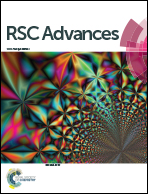Licarin B from Myristica fragrans improves insulin sensitivity via PPARγ and activation of GLUT4 in the IRS-1/PI3K/AKT pathway in 3T3-L1 adipocytes
Abstract
Peroxisome proliferator-activated receptors (PPARs) are ligand-activated transcription factors regulating lipid and glucose metabolism. The objective of the present study is to characterize the cellular effect of Licarin B (LB), a neolignan isolated from Myristica fragrans on the PPARγ and insulin signaling pathways in 3T3-L1 preadipocytes. The molecular mechanism of action of LB on PPARγ and insulin signaling pathways were studied using in vitro and in silico methods. Functional activation of PPARγ in vitro was confirmed by 3T3-L1 preadipocyte differentiation, regulation of target genes and protein expression. LB caused triglyceride accumulation during adipogenesis but significantly less compared to rosiglitazone (RG), a PPARγ full agonist. In in vitro time-resolved fluorescence resonance energy transfer-based competitive binding assay, LB showed an IC50 value of 2.4 μM whereas for RG and GW9662 it was 57.96 nM and 18.68 nM respectively. Virtual screening of LB with PPARγ showed hydrophobic interactions with a binding energy of −9.36 kcal mol−1. Interestingly enough LB improved insulin sensitivity by up regulating the GLUT4 expression and translocation via IRS-1/PI3K/AKT pathway, enhanced adiponectin secretion and modulated mRNA expression profile of PPARγ target genes C/EBPα, IRS-2, and LPL significantly compared to RG. This scientifically validate LB as a promising bioactive for insulin resistance and associated complications through its partial PPARγ activity.


 Please wait while we load your content...
Please wait while we load your content...